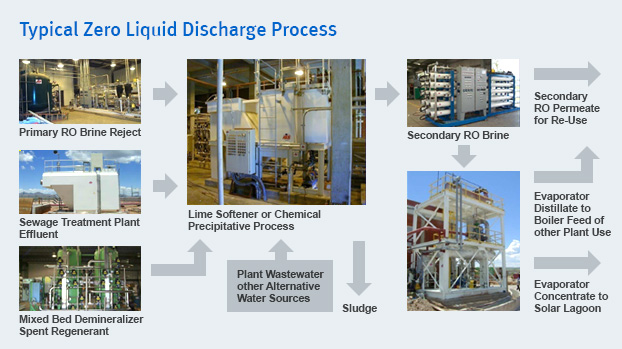Zero Liquid Discharge

Zero Liquid Discharge
In a waste water treatment facility, zero discharge theoretically means no discharge of any kind of pollutants into the environment. But this is practically impossible and, the term zero discharge is loosely used to define no liquid discharge into the environment. So, quite often, zero discharge and zero liquid discharge are used in the same meaning. For all practical purposes, the concept of zero discharge necessarily means the following:
As with conventional waste water treatment systems, zero discharge system also includes primary treatment, secondary treatment and tertiary treatment. However, the main objective in a zero discharge treatment system is to see that:

Primary Treatment
The quality of waste water determines the overall design of any zero discharge treatment system. Depending on waste water quality, waste water is subjected to suitable primary treatment which is normally meant to equalize influent, and to remove/reduce:
The food to microorganism’s ratio (F/M), and biodegradability of organics in the waste water, are some of the important parameters that decide whether anaerobic digestion is necessary before allowing aerobic respiration. During these operations, it may be necessary to adjust process pH, add necessary chemicals, and maintain dissolved oxygen concentration to achieve desired results.
